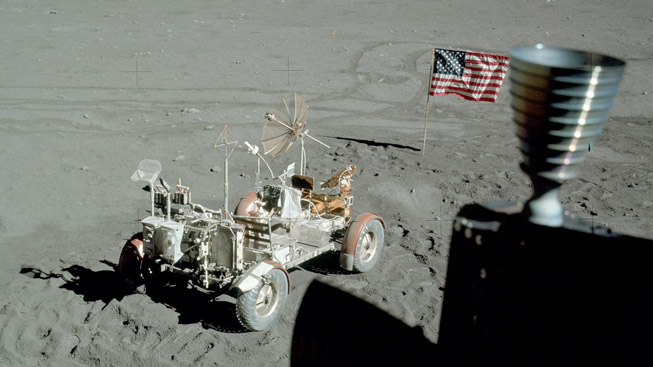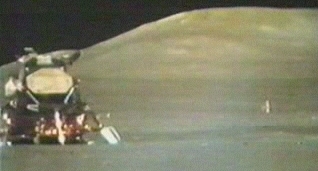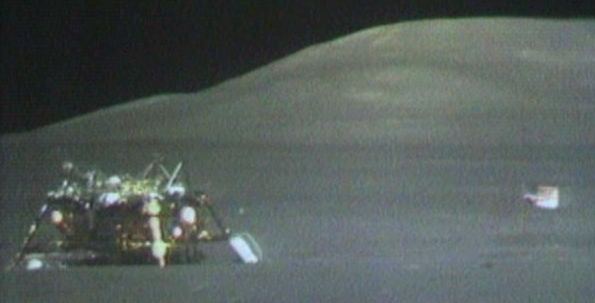| Animation
made from seven LROC images of the Apollo 17 landing site,
ordered from sunrise to sunset, and showing the changing
length and location of the shadow cast by the U.S. flag
erected by the crew. The frames are: (1) M116113215RC,
Sun 8 degrees above the eastern horizon; (2) M131447374LC
, 11 deg. east; (3) M129086118LC
, 35 deg. east; (4) M109032389LC
, 68 deg. east; (5) M134985003RC
, 26 deg. west; and (6) M117291316LC
, 5 deg. west. LROC images courtesy NASA/GSFC/Arizona
State University. |






